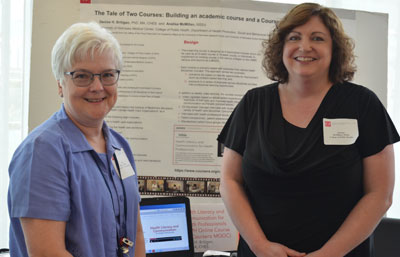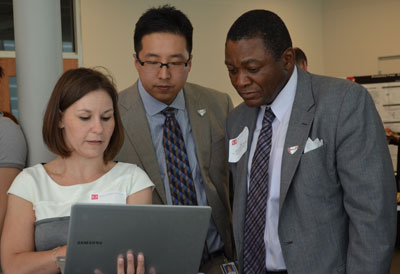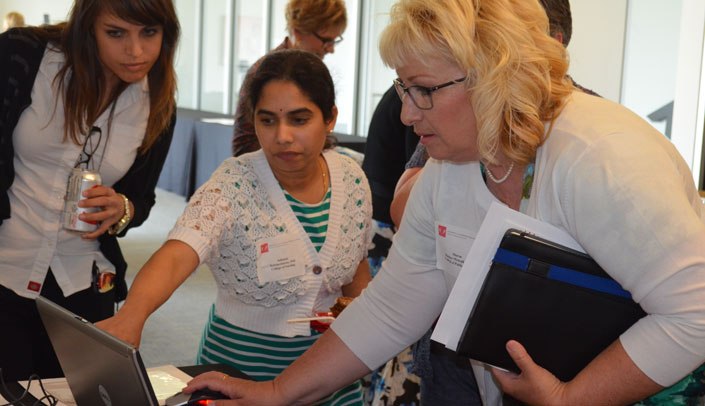A biostatistics primer.
A series on bedside procedure.
A massive open online course that hasn’t even started but already has enrolled nearly 3,000 people.
These were among the 16 e-learning or “flipped classroom” projects unveiled Thursday at the “UNMC Innovators in Education” event.
For a complete breakdown of projects and list of project leaders and members, click here.
 |
From left, Denise Britigan, Ph.D., and project member Analisa McMillan already have almost 3,000 people from 145 countries signed up for UNMC’s first MOOC, months before the course begins. |
“People have used games, they’ve used avatars, they’ve used opportunities for students to go back and master the information,” he said. “There are all kinds of different elements, but they all have the common element of the interaction. That’s what the students want.
“I think we’ve learned so much,” he said. “These are the innovators.”
Kendra Schmid, Ph.D., who created a biostatistics primer, said work on her module was challenging, but it was exciting to see the tools available to improve distance education and classroom flexibility.
“My class is not as interactive as these modules,” she said. “So I’ve come up with a lot of new ideas that I may incorporate in my class at some point.”
Carrie Elzie, Ph.D., and Ryan Splittgerber, Ph.D., attended a professional training course to help create modules for their project, 10 clinical anatomy e-learning modules.
“We’ve gotten great feedback from student usage and student focus groups,” Dr. Elzie said.
Dr. Splittgerber said student feedback has given him a lot of ideas to improve the module going forward.
“I learned so much about what we can do next year to make it better,” he said.
 |
From left, Carrie Elzie, Ph.D., displays a module for Howard Liu, M.D., and Dele Davies, M.D., at Thursday’s event. |
Guest speaker Nicholas Lorenzo, M.D., founder, CEO and chief medical officer at PHLT Consultants, praised the forward-thinking nature of the projects.
“What I saw today was very impressive,” the UNMC alumnus said. “It shows that you need somebody who is committed to creating these modules, is willing to work with the technology folks to get it done, and has some creativity and enthusiasm.”
Jyoti Mahapatra, M.D., who created a module called “Introduction to the Trauma Patient,” said watching her colleagues’ presentations had given her new ideas for future projects, as well.
“I think we’ve all got the content,” she said. “It’s the delivery that’s a learning process. And we’re all learning from each other, how to improve our delivery for the students.”
